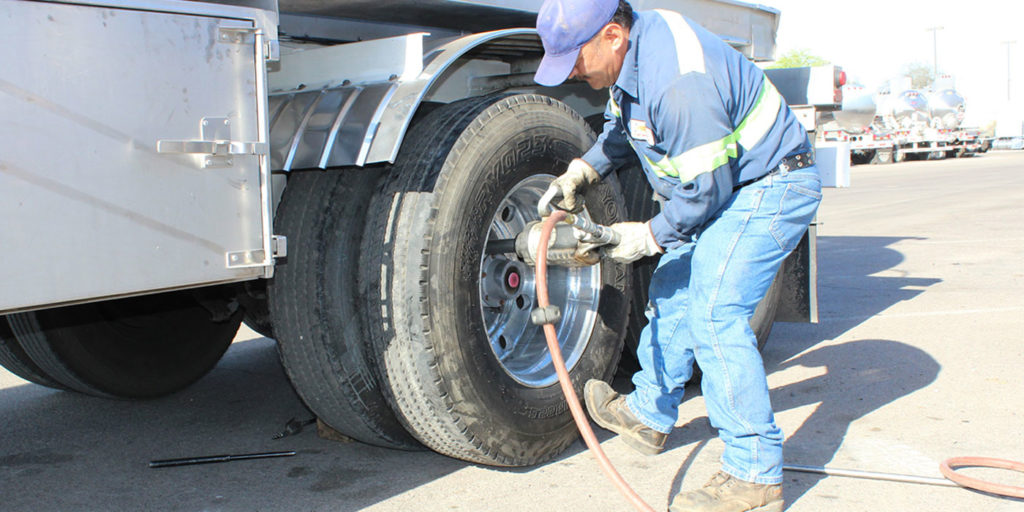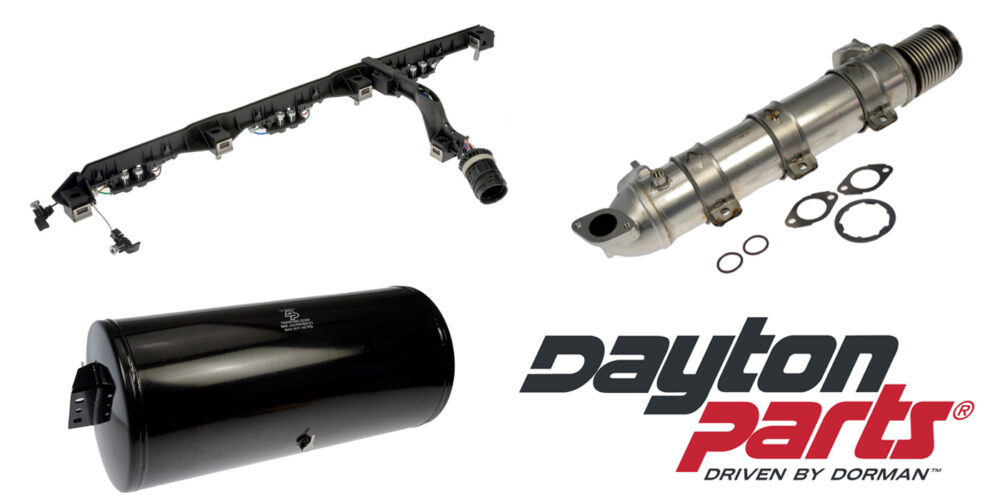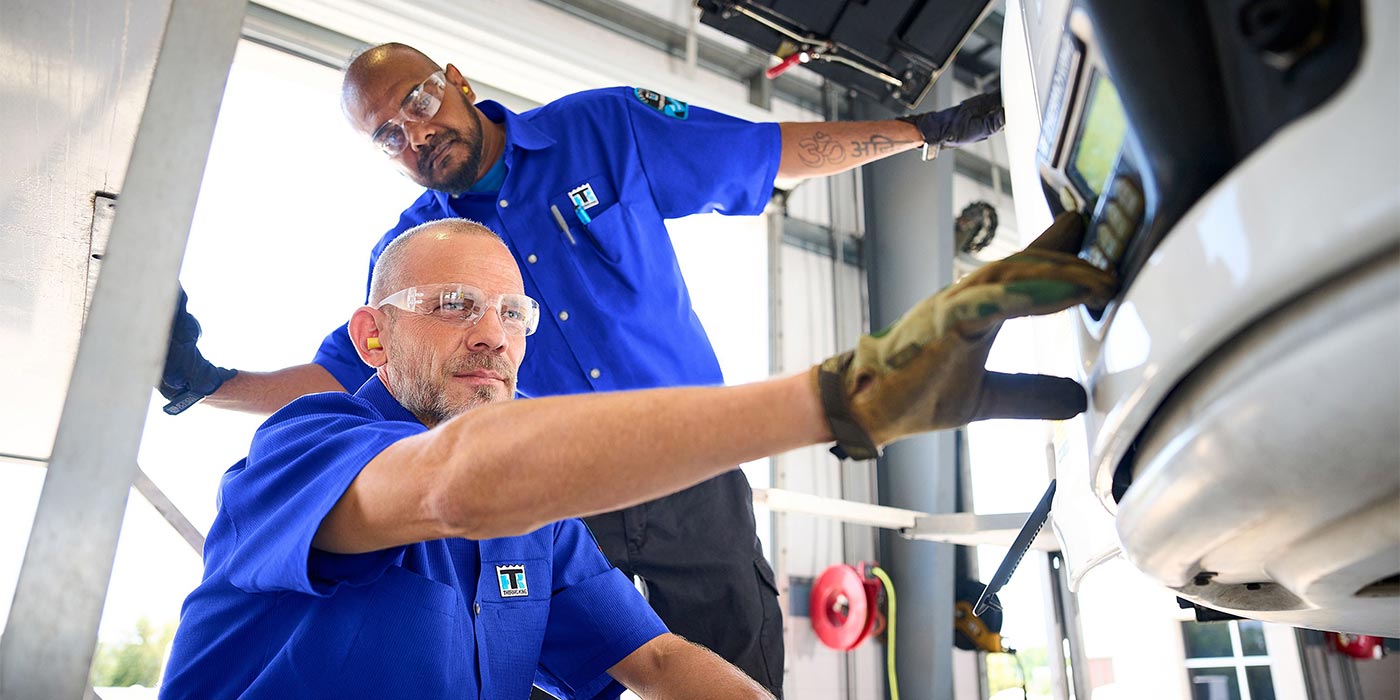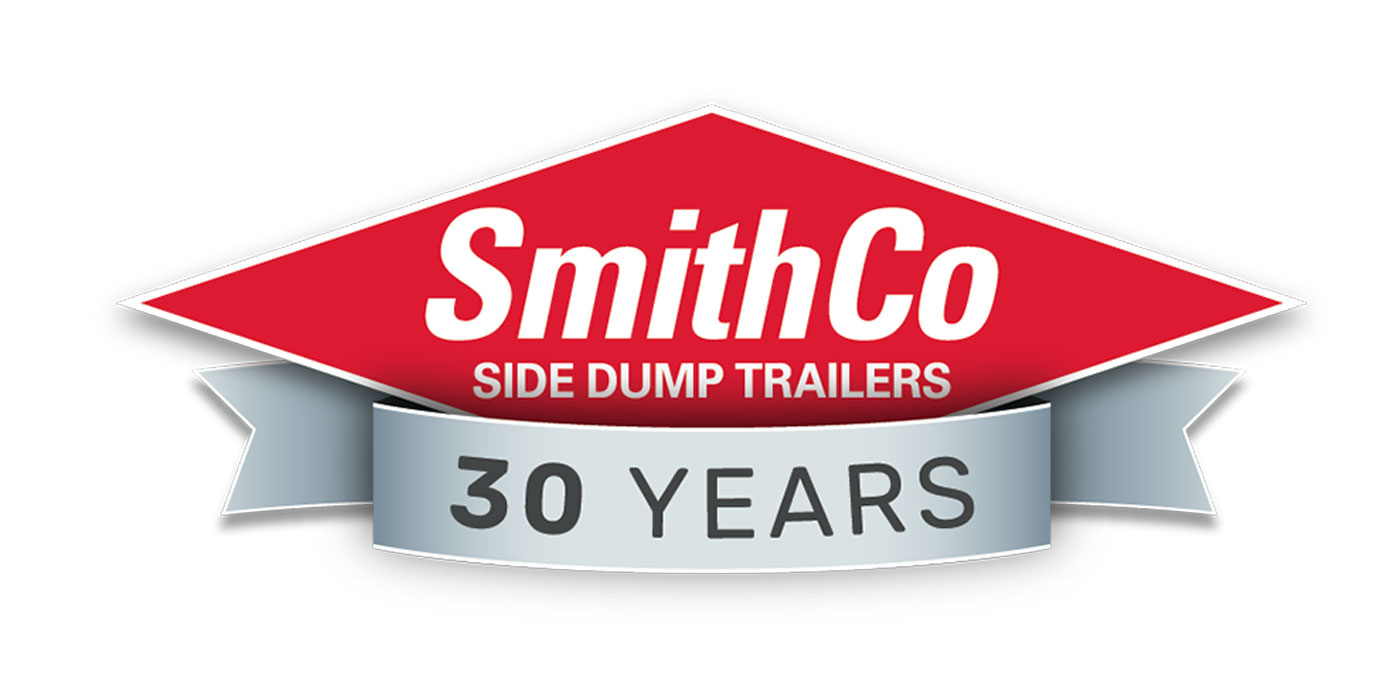If there’s one thing we all need a little of right now, it’s stability. Something we can depend upon. Something that, no matter what happens, if we just focus on this one thing, everything will be okay. Lean in closer, fleet friends, because I know that one thing. Are you ready?
Proper tire inflation.
Now, don’t groan! Yes, we’re talking about tire inflation again because it’s that important, and guess what? No matter the state of the world and the amount of uncertainty swirling around you, the battle for proper tire inflation is a universal constant. It will always be important and always be worth your time and attention. As Jason Miller, national fleet channel sales manager at Cooper Tire and Rubber Co., is fond of pointing out: it’s air in the tire that carries the load, not the tire itself.
“If you want to visualize how important air in a tire is,” Miller said, “when you have 60,000 lbs. rolling down the highway at 60 to 70 MPH, there are two things that matter: 1. How much the tire sidewalls are flexing because if they’re flexing too much they build up heat and they could fail, and 2. The shape of the tire’s contact patch. There’s really about the width of two hands that makes contact with the ground and you want to make sure that is the best possible shape for starting, stopping and turning. So, you’re managing the flexing of the sidewall and the shape of that contact patch through inflation pressure.”
To keep the proper PSI in your tires you need to start with the right PSI–and that can vary by loaded weight. Miller did point out some baselines to use as a starting point.
“The inflation pressure doesn’t need to be a set number—it needs to be a number that carries the amount of load,” he said. “When you’re trying to find that number, the steer axle is the most consistently-loaded tire on the truck because of the engine. A typical 80,000-lb. configuration has 12,000 lbs. on the steer, 34,000 on the drive tires and 34,000 on the trailer tires. Twelve thousand pounds on the steer axle is 6,000 lbs. per steer tire, but 34,000 lbs. over eight drive tires is only 4,250 lbs. per tire. So, you need a full 110 PSI in a typical steer tire and even more if you’re running a heavy steer axle like a 13,000-lb. axle. You need quite a bit less than that on the drive tires. If you’re trying to maximize your tire effectiveness, you start with the right number that you need for the load. So, steer tires are upward of 100 to 110 PSI and drive tires–fully loaded–around 85 to 90 PSI.”
Many tire manufacturers publish inflation load tables to aid you in your fight against improper tire pressure. Lawrence Williamson, B2B regional technical partner and customer engineering support manager at Michelin North America Inc., stressed the importance of using these tables unless specifically directed by a tire manufacturer.
“To select the proper load and inflation table, locate your tire size then match your tire’s sidewall markings to the table with the same sidewall markings,” he said. “Example: if a truck is equipped with 275/80R22.5 LRG X Line Energy D on the drive position, the weight per axle has increased from 18,760 lbs. to 21,040 lbs. when moving into a new application, the recommended pressure should increase from 85 to 100 PSI.”
You can’t just take the pressure reading at any point. Tire pressures should be set cold before the trucks leave the yard.
“Cold inflation pressure is most accurately measured when tires have been parked for at least three hours or driven less than a mile at a moderate speed,” said Matt Schnedler, product manager for truck and bus radial, U.S. and Canada at Bridgestone Americas Tire Operations (BATO). “When tire pressure is maintained at a proper level, fleets are doing their part to promote safer driving conditions while optimizing the cost-effectiveness of their tire investment.
You set the pressure, but your team maintains it
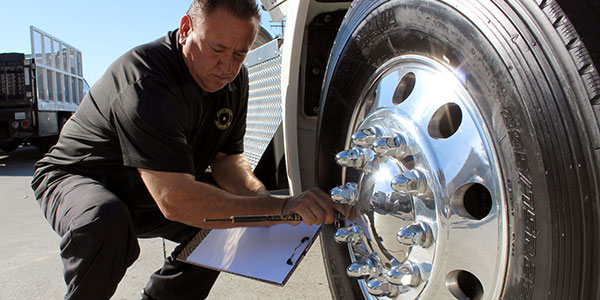
This is the hardest part. You can make sure the right pressure is set, but then you have to send the truck into the world, thousands of miles from your watchful eyes and trust that your team will take care of your carefully-inflated tires. Of course, they can’t do that without the proper training, and it starts with the men and women who spend every day with your trucks: your drivers.
“It’s still common for drivers to check tire pressure with ‘thumpers;’ but numerous exercises have demonstrated that tire thumping is not an accurate way to check pressures,” said Pat Keating, senior manager of field engineering at Yokohama Tire. “Fleet managers that can make progress in transitioning drivers from thumpers to gauges will see an improvement in fleet pressure consistency. Most fleets find that the best results are achieved when a system is in place to augment driver efforts with maintenance staff.”
Tire pressure monitoring systems and automatic tire inflation systems are sound investments to keep proper pressure. You can dive into those offerings below, but at the most basic level, a reliable tire pressure gauge is the minimum that you should be providing every driver.
“Ensure the air pressure gauge is checked against a calibrated master gauge. If a master gauge is not available, provide a new air pressure gauge,” recommended John Grimm, manager of field engineering at Falken Commercial Division, who went on to note that Falken Tires often provides new air pressure gauges to customers, and also said to “use flow through valve caps, which make it easier to check tire pressure than a cap does.”
Arming drivers is the first step. Next, you have to make sure they know how to use them, and most of all, make sure they’re doing tire inspections religiously.
“As fleet schedules become more varied and hectic, it may become more difficult to regularly make pressure checks. At the same time, in-route tire issues can be more costly than ever,” Keating said. “A simple way to ensure that pressure is being maintained is to create a checklist and mark dates. Some fleets actually write pressure check dates on the tire or in a designated place on the truck.”
Michelin’s Williamson said that when it comes to tire pressure, drivers should be:
- Responsible to perform a walk-around inspection before the unit leaves on a trip so preventative maintenance starts with them.
- Expected to know what the minimum fleet tread depth and recommended steer, drive and trailer inflation pressure is.
- Aware that an “out of service” violation reflects on their personal CSA score; they have ownership in making sure the tractor-trailer is in tip-top condition before it moves. Once they move the vehicle, they are held accountable for maintenance issues.
“Check inflation pressures on all your tires at least once a week, including spares,” Williamson said. “Remember, a drop in ambient temperature results in a drop in tire pressure and therefore more frequent checks may be required during cold weather conditions. Reference the tire manufacturer’s literature on cold climate pressure to determine if an adjustment to target pressure is recommended. Take caution, however, when temperatures drop below freezing as ice can form in the valve stem, thus promoting leaks. A best practice is to check pressure inside a heated facility when outdoor temperatures are below freezing.”
One quick tip that Williamson also mentioned is that the duration of the trip has no direct impact on the recommended tire pressure. It’s all about the load and the PSI. Again, refer back to the load and inflation tables provided by the tire manufacturer.
We’ll put another plug for automatic tire inflation and pressure management systems–Click here to go read about those systems–but BATO’s Schnedler said that even those don’t replace regular, thorough inspections: “Using TPMS devices to measure tire pressure will provide accurate pressure readings and real-time updates for drivers, but it should not replace the manual, hands-on inspection process to identify cracks, cuts or bulges that may cause tire damage.”
Falken Tires’ Grimm posed these questions that anyone doing a truck tire inspection should be able to answer:
• Is the tread depth too low?
• Any irregular wear?
• Are there punctures? Nails?
• How old is the tire? (Hint: check the DOT serial week/year)
• Drive tires: Are the wheels’ hand holes aligned? (If not, inner dual air pressure can’t be checked.)
• Steer tires: Are these tires’ pressures the proper load range for the axle?
“And don’t forget to check the inside sidewalls of duals. Cuts of unknown depth should be probed – a little water getting into the casing can do a lot of damage,” Yokohama Tire’s Keating added.
Clearly, there’s a lot to keep an eye on to maintain correct tire pressure. While it begins with you and continues with your drivers, it doesn’t end there. This should be enough to lay a solid tire pressure management foundation, but to continue your journey, you can jump over to our tire maintenance story or dive into the scrap tire pile to see what the proper analysis of out-of-service tires can say about the effectiveness of your tire pressure management process.
The choice is yours. Fight the good tire pressure fight and stay focused. It’ll bring you operational certainty as we roll forward into the unknown.

